When I first started crocheting about 27 years ago, one of the biggest challenges I faced was understanding crochet blanket sizes.
That, and learning that if I change the hook size and yarn type, the pattern will turn out slightly (or much) different than the pattern states.
Through a lot of trial and error, I’ve gathered quite a bit of knowledge on this topic.
Let’s dive in and unravel the mystery of crochet blanket sizes, shall we?
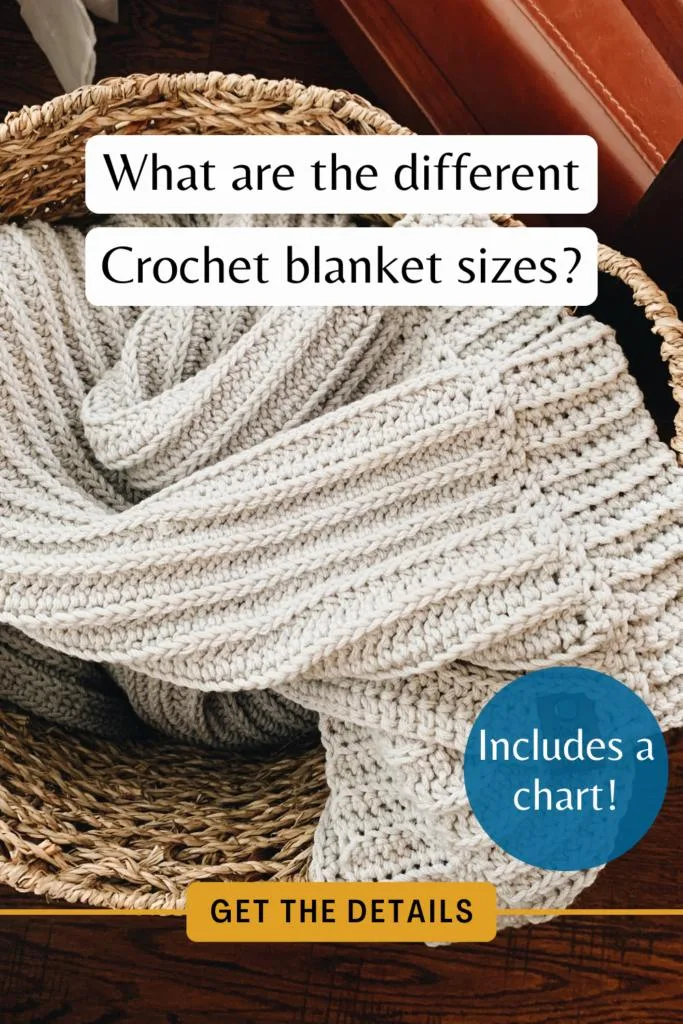
What are the Different Sizes of Crochet Blankets?
Crochet blanket sizes typically range from lovey and security blankets for babies, which are about 12 to 24 inches, to larger sizes for beds such as twin (66×90 inches), queen (90×100 inches), and king (108×108 inches). Throws and afghans for sofas are generally around 50×60 inches. However, these sizes can be adjusted based on personal preference and the specific pattern.
Understanding Standard Crochet Blanket Sizes
When you’re just starting on your crochet journey, or even if you’ve been crocheting for years, the question of blanket size can be tricky.
Importance of Knowing Blanket Sizes
Understanding standard crochet blanket sizes is crucial whether you’re a beginner or a seasoned pro. I can’t stress enough how important it is to know what size you’re aiming for before you start crocheting.
It’s like going on a trip without a map! If you don’t know where you’re headed, you could end up anywhere.
Not to mention, having a clear size goal can save you from the frustration of running out of yarn mid-project or ending up with a blanket that’s more of a scarf.
It helps estimate how much yarn you’ll need, and how long it’ll take, and it can even guide your pattern or stitch choice.
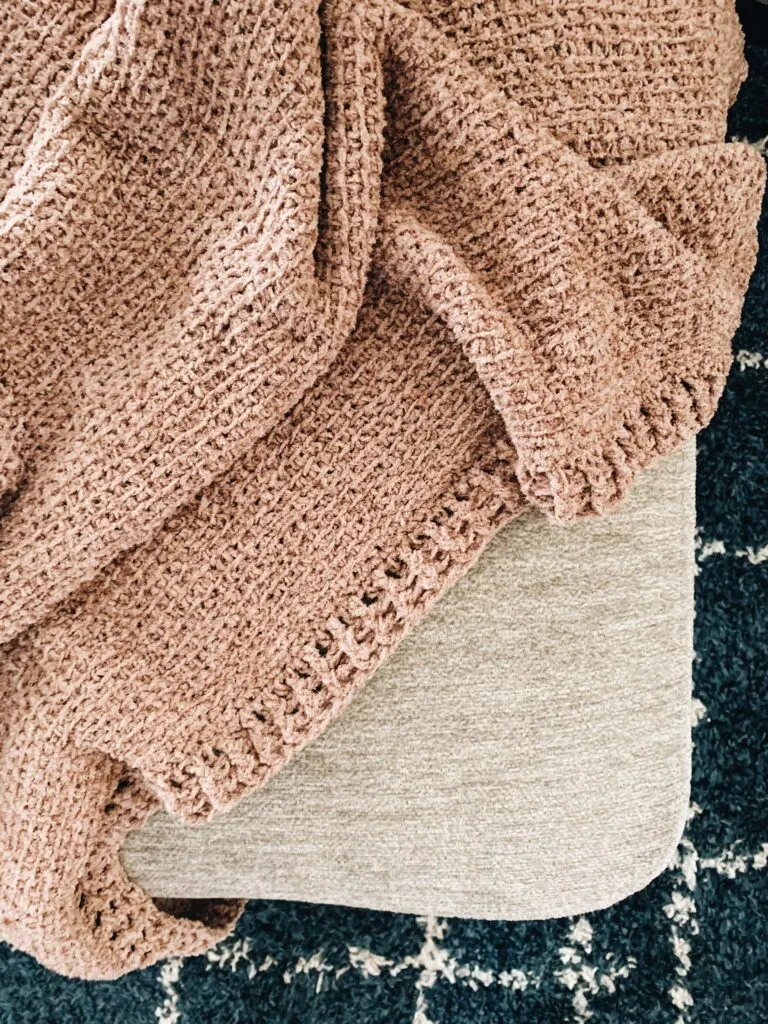
Common Sizes and Their Uses
Over the years, I’ve worked with various crochet blanket sizes and noticed that some measures work better for specific uses.
For instance, a small 12×12 inch lovey or a slightly larger 36×36 inch baby blanket is perfect for a little one.
A throw or an afghan around 50×60 inches works well for snuggling on the couch.
And if you’re making a blanket for a bed, you’ll want to go bigger. Consider something like a twin size (roughly 66×90 inches), a queen size (about 90×100 inches), or even a king size (usually 108×108 inches).
Remember, these are just guidelines, and your blanket can be any size you want!
Measurement Tips and Tricks
Now, let’s chat about measuring our blankets. It can be tricky, especially when we get into those larger sizes.
When I measure, I lay my blanket flat on the floor and use a soft tape measure for accuracy. Measure from edge to edge, only including any border if your pattern specifically includes it in the overall size.
It’s also worth mentioning that measuring as you go is a good idea. This way, you can adjust your plan if your blanket turns out smaller or larger than anticipated.
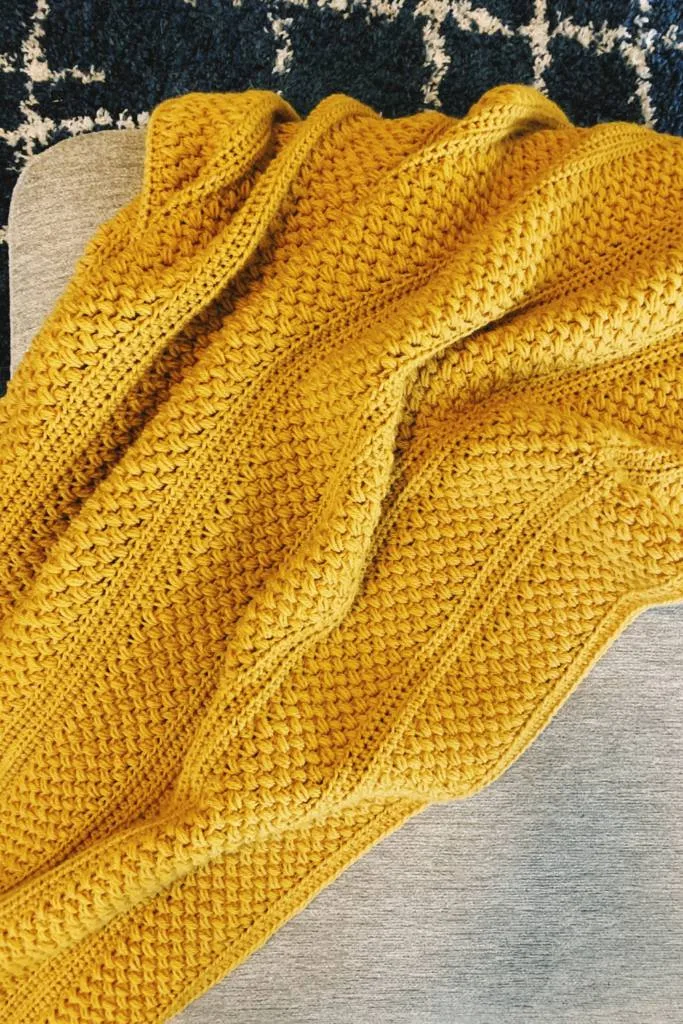
3 Common Types of Yarn for Crochet Blankets
One of the questions I’m often asked, and it’s good, is: “What type of yarn should I use for my crochet blanket?”
I remember the confusion I felt all those years ago, standing in the yarn aisle, surrounded by a rainbow of options, not knowing where to start.
Weight and Texture
Firstly, let’s talk about weight and texture.
When we say “weight” in the yarn world, we’re talking about the thickness. From my experience, for blankets, worsted weight (medium weight) is a good go-to as it works up quickly and creates a cozy, substantial fabric.
However, you might opt for a lighter-weight yarn for a summer baby blanket or a chunky yarn for a super warm winter throw.
The texture of the yarn also plays a part. Smooth, plied yarns give your stitches a clean, defined look, while fluffier yarns can create a softer, more blurred effect.
Fiber Content
Next, let’s discuss fiber content. The type of fiber you choose will affect your blanket’s drape and durability.
Cotton yarn, for example, is lightweight, breathable, and washes well, making it a good choice for baby blankets.
Wool, on the other hand, is warm and elastic, perfect for cozy winter afghans.
Acrylic is popular due to its affordability and easy care, but it may need to breathe better than natural fibers.
And then, there are blends, which aim to combine the best properties of different fibers.
Yarn Care
Finally, the care of your yarn is critical to maintaining the size and shape of your blanket. Each type of yarn has its care requirements, usually listed on the yarn label.
Most acrylic and cotton yarns can be machine washed (and sometimes dried), a lifesaver for a baby blanket that may face frequent washings.
Wool, especially if it’s not superwash, requires more careful hand washing and flat drying to avoid shrinking or felting.
Remember, the better you care for your blanket, the longer it will last and the better it will look.
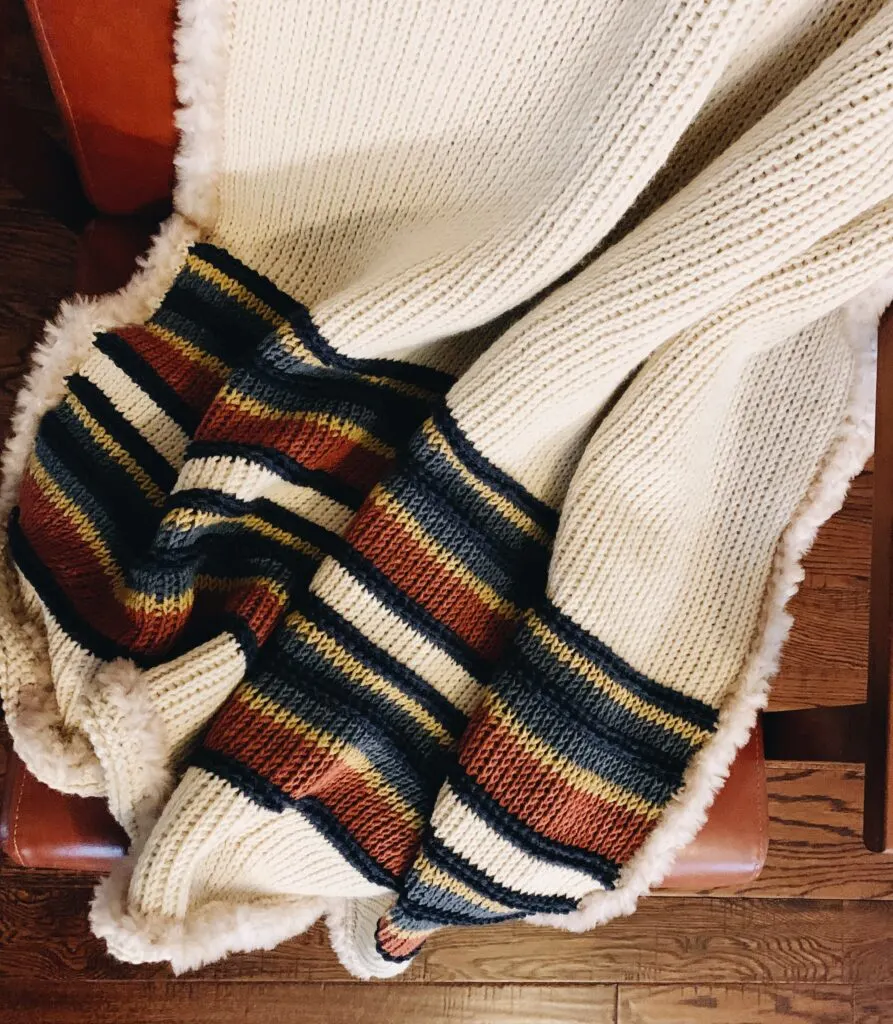
How to Customize Your Crochet Blanket Size
One of the most beautiful things about crocheting is the freedom it gives us to create something uniquely our own.
That’s why today, we’ll dive into one of my favorite topics – how to customize your crochet blanket size.
Whether you want to upsize a baby blanket pattern into a full-blown afghan or downsize a bedspread pattern into a cozy throw, I’ve got your back. Let’s get into it!
Choosing Your Design
The design or pattern is the first thing you must consider when customizing your blanket size. Not all patterns are created equal when it comes to resizing.
Some complex patterns might lend poorly to size adjustments, while others can easily be modified. Please look for ways to specify a repeatable stitch pattern or motifs that can be added or subtracted to change the size.
And remember, simplicity is your friend. The more straightforward the pattern, the easier it will be to adjust.
Calculating Stitch Count
Next up, let’s chat about stitch count. Once you’ve decided on your pattern and the size you want your blanket to be, it’s time to do some math (don’t worry, it’s not as scary as it sounds!).
You’ll need to know your stitch gauge: how many stitches you have per inch or centimeter. Then, multiply your gauge by the width you want your blanket to be.
This will give you the number of stitches you need to chain for your foundation row.
Sample Swatching
Now, I know we’re all eager to dive into our projects but trust me, making a sample swatch is an essential step you don’t want to skip.
With your chosen yarn and hook, a swatch helps you determine your stitch gauge (the number of stitches and rows per inch or centimeter). It’s a small investment of time that can save you from ending up with a blanket that’s the wrong size. Remember to measure your swatch when it’s lying flat and not stretched.
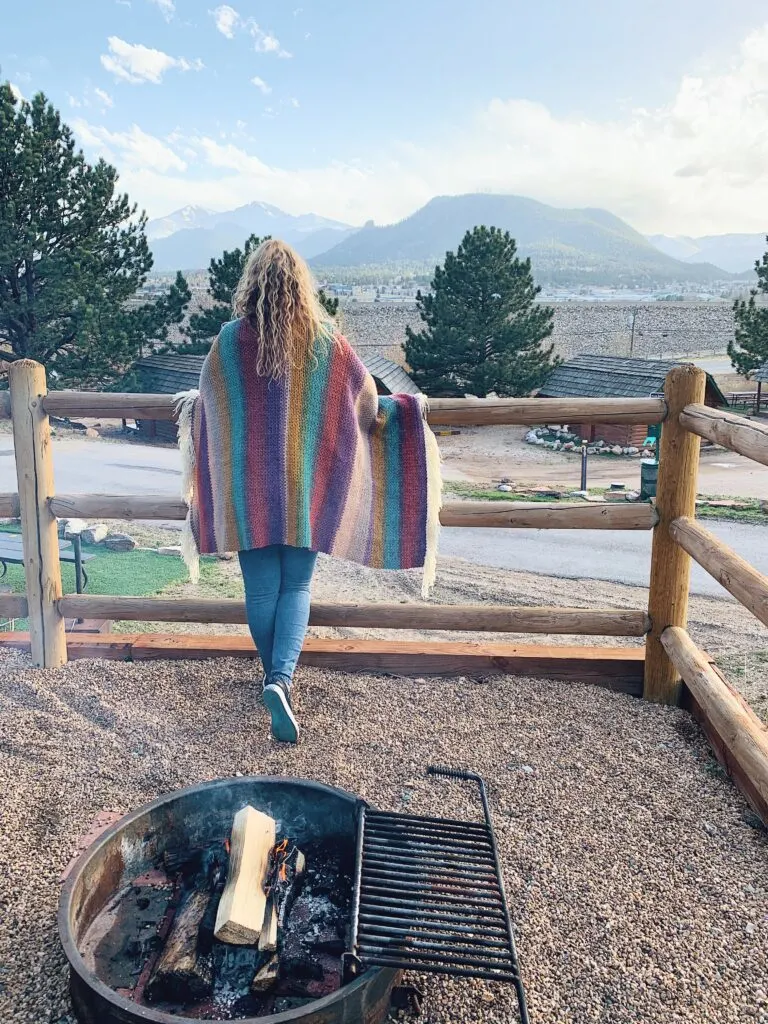
Troubleshooting Crochet Blanket Size Issues
We’ve all been there – you’ve poured hours into a blanket project, only to realize it’s not turning out quite as you had envisioned. Maybe it’s too small or too large, or those edges need to be more straight than you’d like.
Don’t fret! I’m here to help you troubleshoot these common crochet blanket size issues. Let’s jump right in!
Problem: Blanket Too Small
Don’t you hate it when you’re halfway through your project and realize it’s shaping up to be smaller than you had planned?
If your blanket turns out smaller than expected, your yarn weight and hook size are the first things to check. Are they matching up with the pattern specifications?
Using a thinner yarn or smaller hook than recommended can result in a smaller blanket. If your yarn and hook match the pattern, consider whether your stitch tension might be tighter than the designer’s.
You might want to practice loosening your tension or switch to a larger hook size to increase your stitch size.
Problem: Blanket Too Large
On the flip side, if your blanket is ballooning into a bedspread, you’ll want to revisit your stitch count and tension. Please make sure you’re not accidentally adding extra stitches – it’s a common mistake to add an extra stitch at the end or beginning of rows.
Also, take a look at your stitch tension. Looser tension can result in a larger blanket, so you should tighten your tension or try a smaller hook.
Problem: Uneven Edges
Crooked edges can be a real pain, can’t they? If your blanket has uneven edges, the culprit is often varying tension or incorrect stitch counts.
Try to keep your tension consistent throughout your project. Counting your stitches after each row can also help catch any mistakes early before they throw off your edges.
If you have a consistent problem with shrinking or growing edges, using stitch markers at the beginning and end of each row can help keep track.
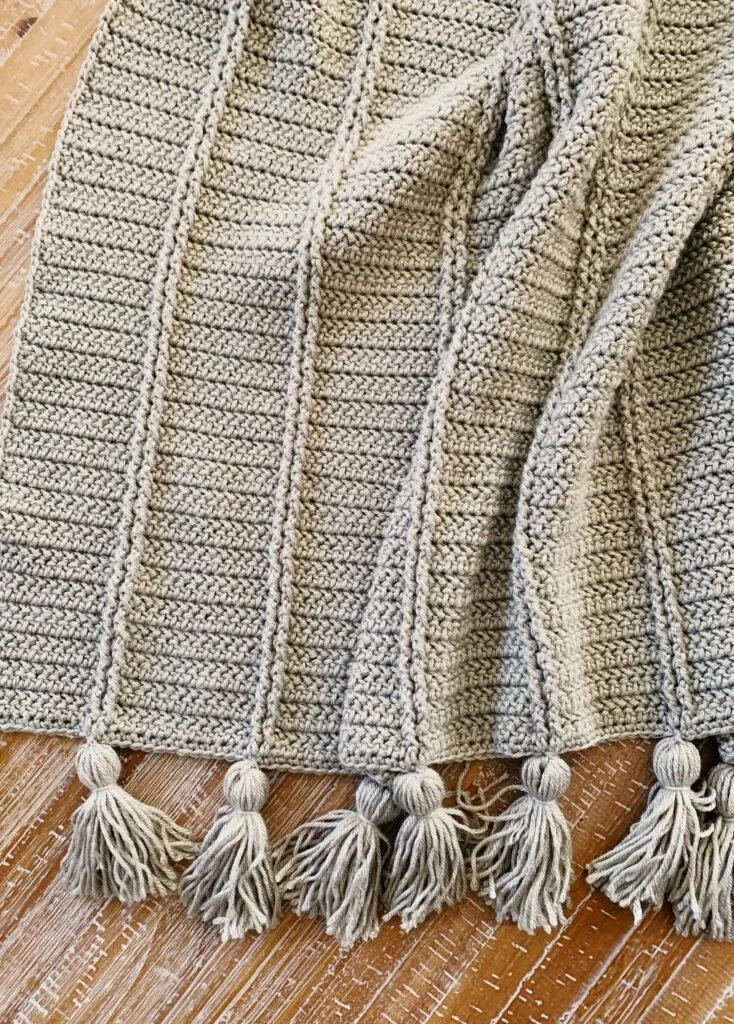
Crochet Blanket Size Chart
Sure, here’s a table to provide a rough estimate. However, please note that the yarn yardage can vary depending on the stitch pattern and tension.
| Blanket Type | Size in Inches | Size in Centimeters | Estimated Yarn Needed in Yards (Worsted Weight) |
|---|---|---|---|
| Lovey | 12×12 | 30.5×30.5 | 150-200 |
| Baby Blanket | 36×36 | 91.5×91.5 | 1,000-1,500 |
| Lapghan | 36×48 | 91.5×122 | 1,500-2,000 |
| Throw | 50×60 | 127×152.5 | 3,000-3,500 |
| Twin Bed | 66×90 | 167.5×228.5 | 4,000-4,500 |
| Queen Bed | 90×100 | 228.5×254 | 5,500-6,000 |
| King Bed | 108×108 | 274×274 | 6,500-7,000 |
This table is based on worsted-weight yarn and a size 5.5mm crochet hook.
Remember that this is an estimation, and the actual amount of yarn needed may vary. Always purchase a little more yarn than you think you’ll need to accommodate for errors or changes in the pattern.
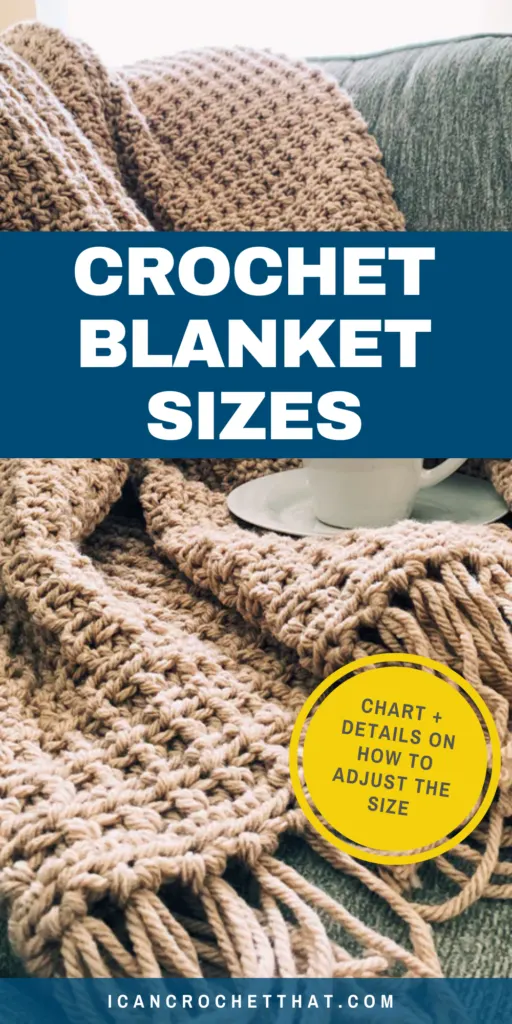

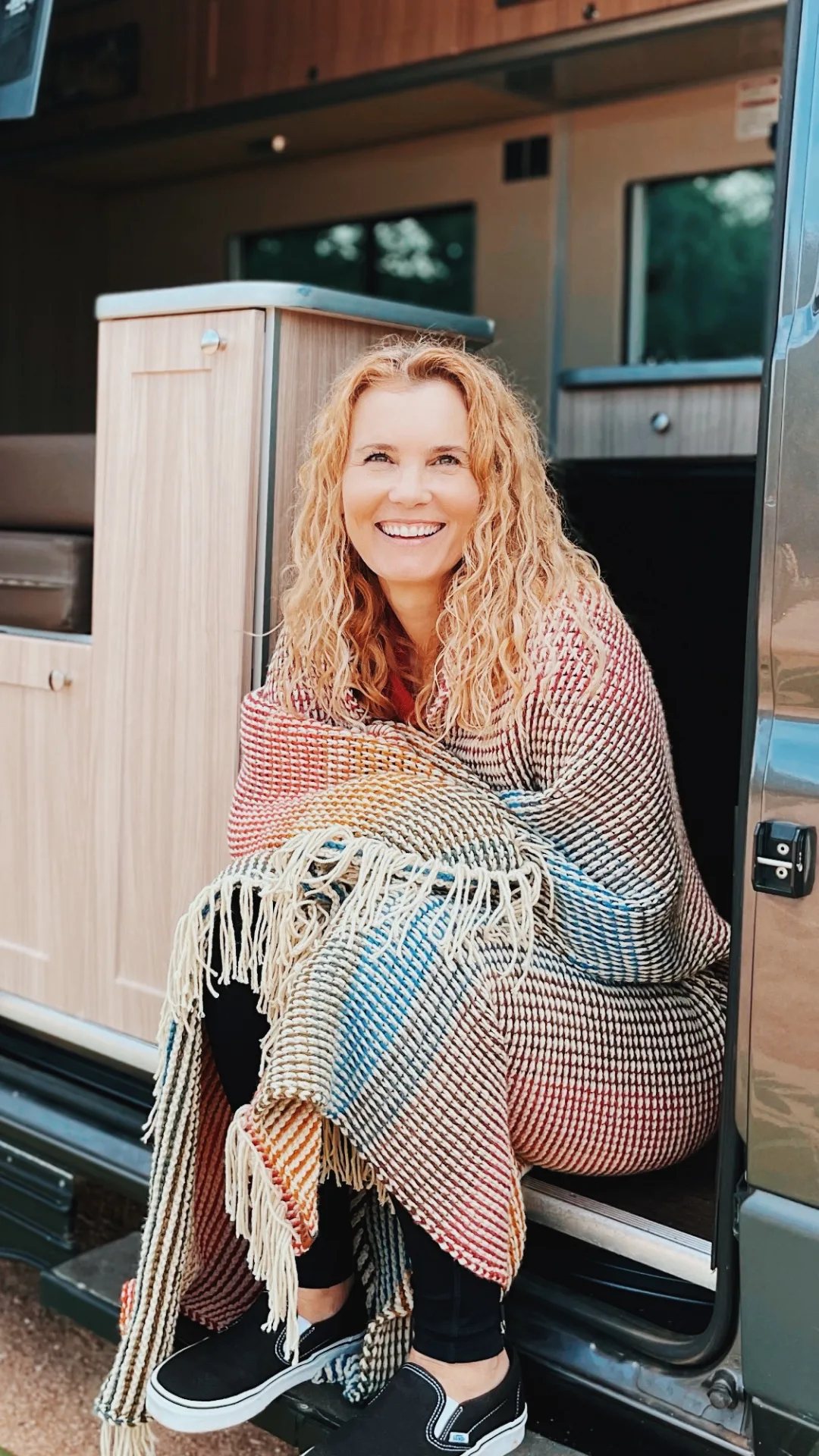
Hi! I’m Julie. I am here for one reason: to help YOU embrace your love of crochet and expand your crochet horizons. I design modern and unique Tunisian crochet and standard crochet patterns and tutorials that bring me joy, and that I think you will LOVE. I’ve been crocheting for 25+ years and with the gentle nudging of my husband, decided to turn this passion into what you see here on ICCT. This is my playground!


